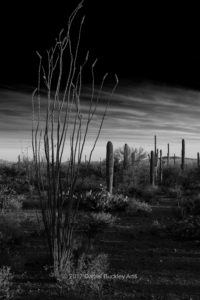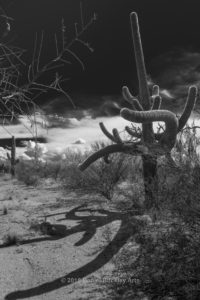A twist on an old idea reveals the other worldly all around us
CLICK IMAGE TO ENLARGE
New photographic explorations are coming into focus through the lens of older work.
Concepts evolve, along with technique, and the crosstalk of work in other media feeds back into the original idea.
My Bewilderness series, which was originally conceptualized as models doing bewildering things in the desert and other wilderness settings, has taken a variety of different twists since it began a few years back.
Now my Apollo 18 series is also undergoing transformation.
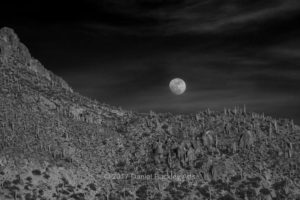 Apollo 18 was intended to photograph places where astronauts for America’s Apollo lunar landing program trained, but with an artistic rather than scientific eye. The series was informed by the look of photographs from the moon landings, particularly with respect to panoramic photos created from images shot on the moon.
Apollo 18 was intended to photograph places where astronauts for America’s Apollo lunar landing program trained, but with an artistic rather than scientific eye. The series was informed by the look of photographs from the moon landings, particularly with respect to panoramic photos created from images shot on the moon.
But of late I’m starting to realize that experiments with a new line of photographic post-production technique is resulting in images that bear their own similarity to photos taken on the moon, and make the earth look like an alien world.
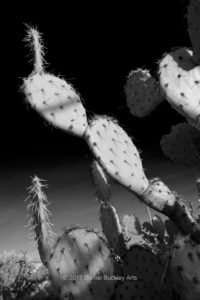 I called one batch from the series “On the Other Moon.”
I called one batch from the series “On the Other Moon.”
People sometimes point to the fact that Apollo photos show the blackness of space but never stars as “evidence” that the moon landings were faked. But what they don’t realize is that the astronauts were shooting in bright sunlight, and the camera sensitivity was adjusted for that bright light source. And just as you don’t see stars in daylight because your eyes are adjusted to the sun, even though the stars are just as present in the sky, so it was on the moon when we put the first boot prints on the lunar surface.
And while the Apollo photos generally appear to be black and white images, often the limited tones of the lunar surface are the true source of that color illusion.
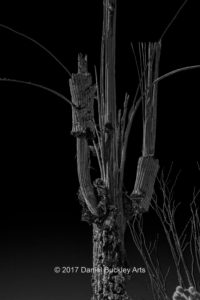 For quite some time now I have been producing images shot in broad daylight and then converted in Adobe Photoshop to gray scale (B&W). The originals were shot in Camera Raw, which affords a great deal of flexibility in manipulating the image in post-production. When one converts to gray scale, a group of sliders comes up allowing one to mix the relative strength of the various colors of the original color image being converted to black and white. By turning the blue of the sky all the way down (or nearly so) and similarly reducing cyan (the blueish color of water vapor in the air), the illusion of a black sky similar to that photographed on the moon is achieved.
For quite some time now I have been producing images shot in broad daylight and then converted in Adobe Photoshop to gray scale (B&W). The originals were shot in Camera Raw, which affords a great deal of flexibility in manipulating the image in post-production. When one converts to gray scale, a group of sliders comes up allowing one to mix the relative strength of the various colors of the original color image being converted to black and white. By turning the blue of the sky all the way down (or nearly so) and similarly reducing cyan (the blueish color of water vapor in the air), the illusion of a black sky similar to that photographed on the moon is achieved.
Adjusting the various other color strengths creates whole new ways of manipulating the composition of the photo. And in the end, they look as though they have been photographed in moonlight, or perhaps on another world.
Treated in such fashion, Arizona’s desert plants and geologic features take on a 1950s science fiction quality. It’s a new way of looking at the southwestern U.S. for it for its other-worldly beauty, and in doing so, connecting this series to photos from man’s first excursions to another world.

